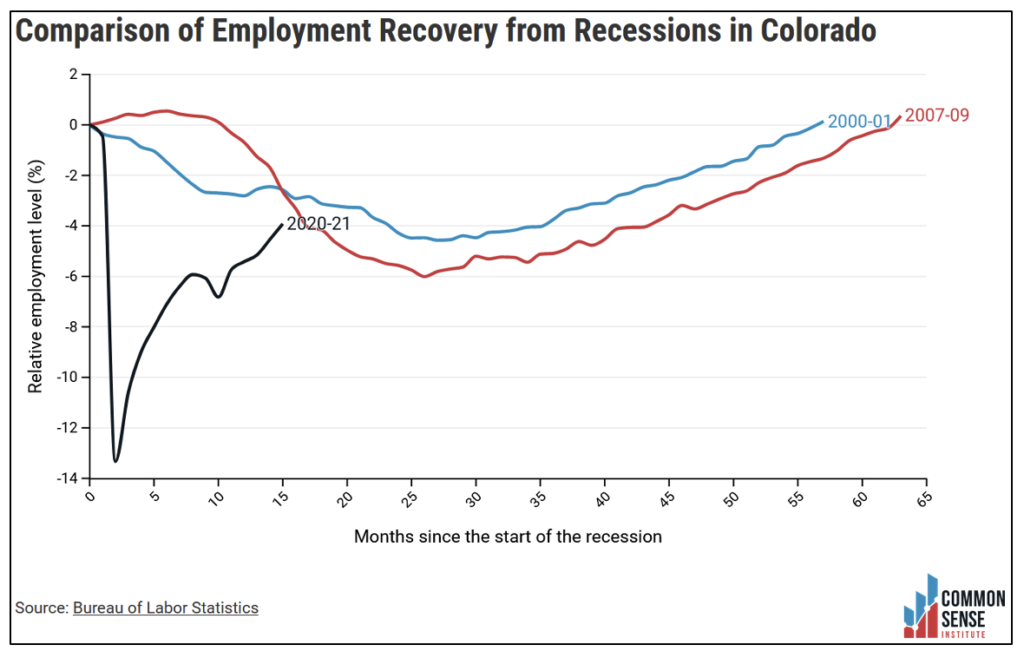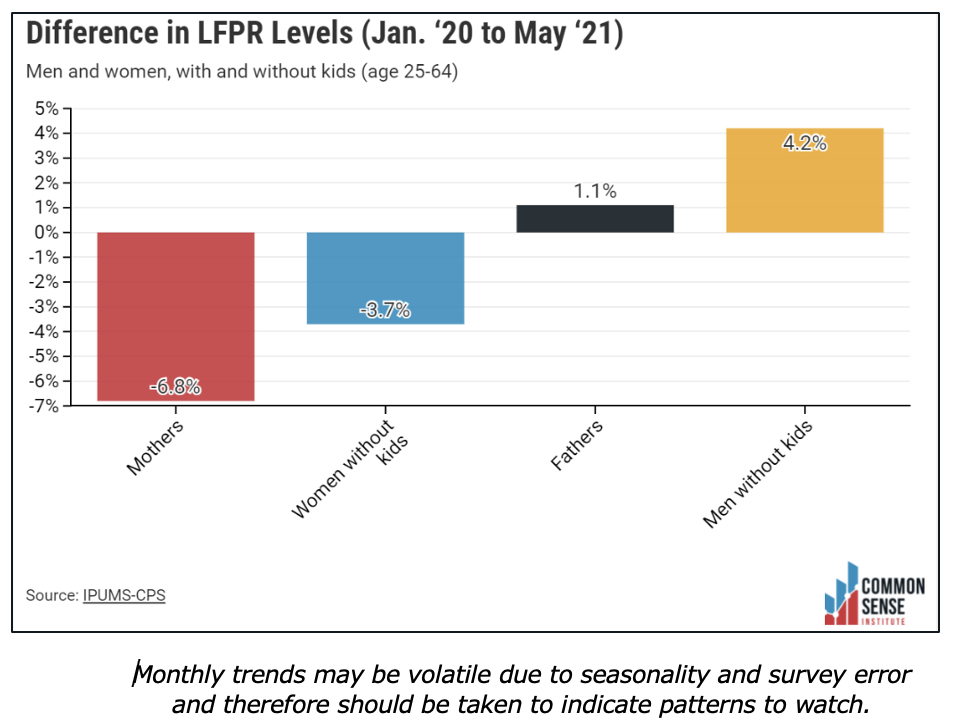Just over a year ago—in April 2020—Colorado lost over 360,000 jobs and experienced the worst month of economic performance in its history. Thirteen months later, the latest data from the Current Employment Statistics (CES) survey shows that, though Colorado's workforce has been on its way to recovering from the worst of the recession over the past several months, a lot of progress remains to be made.
Key Findings—Colorado May 2021 Employment Data (CES Survey[1])
- Colorado added 17,100 total nonfarm jobs in May.
- At this pace, the state would reach nominal pre-pandemic employment levels by December ‘21.
A Deeper Dive into Colorado Industries
- Some sectors in Colorado added jobs in May, while others lost
- The leisure and hospitality industry added 14,400 jobs.
- The administrative and support and waste management and remediation services industry lost 2,200 jobs.
- Though the leisure and hospitality industry has led the recovery by adding 38,900 jobs between Jan. ‘21 and May ‘21, it is still down 43,400 jobs relative to Jan. ‘20.
- Arts, entertainment, and recreation is down 18.9%, or 11,200 jobs.
- Accommodation and food services is down 11.2%, or 32,200 jobs.
 Colorado Labor Force Update
Colorado Labor Force Update
The overall Colorado labor force participation rate (LFPR) has nearly recovered, and the unemployment (UE) rate continues to trend downward. Though the recovery from the pandemic has been robust, some demographic groups lag.
Key Findings—Colorado May ‘21 Labor Force Data (BLS[2], FRED[3], and IPUMS-CPS[4])
- May LFPR decreased .1 percentage points to 68.6%, just .2 percentage points below Jan. ’20 LFPR, 68.8%.
- May UE rate decreased .2 percentage points to 6.2%, still 4.5 percentage points above the Jan. ’20 UE rate of 2.7%.
- The monthly LFPR for Colorado women decreased from 61.9% last month to 59.1% and remains 5 percentage points below its pre-pandemic level.
- Nationally the female LFPR rose .1 of a percentage point from 56.1% to 56.2%.
- If the pre-pandemic Colorado LFPR for women remained, there would be 116,785 more women in the labor force today.
Women and Men, With and Without Kids in the Labor Force
- The LFPR for Mothers in Colorado was 76.2% in Jan. ’20 and 69.4% in May ‘21, down 6.8 percentage points.
- The LFPR of women without kids dropped 5 percentage points between Apr. ’21 and May ’21.
- LFPRs of fathers and men without kids were both higher in May ‘21 than in Jan. ’20.
[1] https://www.colmigateway.com/vosnet/lmi/default.aspx
[2] https://www.bls.gov/
[3] https://fred.stlouisfed.org/
[4] https://cps.ipums.org/cps/